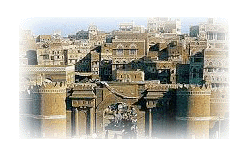 |
 |
 |
 |
 |
 |
 |
 |
 |
 |
 |
 |
 |
 |
 |
 |
 |
 |
 |
 |
 |
 |
 |
 |
 |
 |
 |
 |
 |
 |
 |
 |
 |
 |
 |
 |
 |
 |
 |
 |
 |
 |
 |
 |
 |
 |
|
 |
|
|
Welcome to MakYemen Home Page |
|
|
It's new!!! So, have a good tour |
|
|
 |
|
|
 |
|
|
|
|
 |
|
|
|
|
 |
|
|
|
|
|
|
|
 |
|
|
|
|
|
|
|
 |
|
|
|
 |
|
|
 |
|
|
|
 |
|
|
The history of the Yemen stretches back over 3,000 years, and its unique culture is still in evidence today in the architecture of its towns
and villages. From about 1000 BC this region of the Southern Arabian Peninsula was ruled by three successive civilizations -- Minean, Sabaean and Himyarite. These three kingdoms all depended for their wealth |
|
 |
|
|
 |
|
|
 |
|
|
|
|
 |
|
|
 |
|
|
|
|
|
on the spice trade. Aromatics such as myrrh and frankincense were greatly prized in the ancient civilized world and were used as part of
various rituals in many cultures, including Egyptian, Greek and Roman. |
|
 |
|
|
|
|
|
|
|
|
|
|
In the 11th century BC, land routes through Arabia were greatly improved by using the camel as a beast of burden, and frankincense was
carried from its production center at Qana (now known as Bir 'Ali) to Gaza in Egypt. The camel caravans also carried gold and other precious goods which arrived in Qana by sea from India. The chief incense traders were the
Minaeans, who established their capital at Karna (now known as Sadah), before they were superseded by the Sabaeans in 950 BC. The Sabaean capital was Ma'rib, where a large temple was built. The mighty Sabaean civilization
endured for about 14 centuries and was based not only on the spice trade, but also on agriculture. |
|
|
|
 |
|
|
|
|
|
|
|
|
|
The impressive dam, built at Ma'rib in the 8th century, provided irrigation for farmland and stood for over a millennium. Some Sabaean carved
inscriptions from this period are still extant. The Himyarites established their capital at Dhafar (now just a small village in the Ibb region) and gradually absorbed the Sabaean kingdom. They were culturally inferior to the
Sabaeans and traded from the port of al-Muza on the Red Sea. By the first century BC, the area had been conquered by the Romans |
|
|
|
|
|
 |
|
|
|
|
|
 |
|
|
|
 |
|
|
 |
|
|
|
|
|
|
 |
|
|
|
 |
|
|
 |
|
|
 |
|
|
|
|
|
|
|
|
|
|